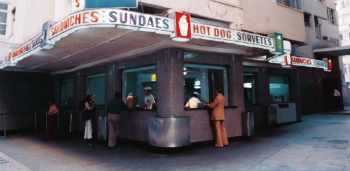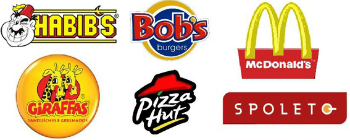"fast food" is an expression of English origin that means a food modality.
It demands agility in preparation and consumption, where meals must be prepared and sold in a short time. Hence the standardization, mechanization and speed of this system.
It is similar to Fordist production on assembly lines, where everything is designed to streamline productivity.
Well-equipped kitchens stand out, but they produce few food varieties. In addition, the consumption environment is often relatively uncomfortable, in order to encourage quick food intake.
It should be noted, on the other hand, that this phenomenon is, in reality, an evolution of the system of restaurants and snack bars of the type drive-in. These establishments emerged in California in the 1940s, and soon spread around the world.
The menu of these establishments is basically made up of snacks, accompanied by French fries and other fried foods, in addition to soft drinks. They are served to consumers who have little time to eat.

Brief History of Fast Food's
The system of fast food it is easily associated with large food chains, although it is also a type of consumption found in some more elaborate restaurants.
The most promising fast food chains gained the world after 1970 and became one of the symbols of capitalism during the Cold War.
As the most prominent examples we can mention McDonalds, the biggest of all the chains of fast food, followed by Burger King, KFC, Subway and Pizza Hut.

It is also worth noting that this type of food is very old if we consider the practice of selling food on the streets through street vendors (street food), this ancient and global practice.
Fast food in Brazil
In Brazil, the networks of fast food they began in Rio de Janeiro, in 1951. At the time Robert Bob Falkenburg, a New York sportsman and businessman, founded the “Falkenburg Ice cream shop Ltd.”.
Initially, the establishment sold vanilla ice cream. The revenue was brought in from the United States and later would become the first and one of the largest companies in fast food of Brazil: the bobs.

It is interesting to note that it was only in 1979 that the first store of the McDonalds in the country, in the city of Rio de Janeiro.
The five companies of fast food that deserve to be highlighted in the Brazilian market are:
- Subway (about 1,600 points of sale);
- Bob's (about 960 points of sale),
- McDonald's (about 750 points of sale);
- Giraffas (about 400 points of sale);
- Habib’s (about 305 points of sale).
In addition to them, others brands of fast fooddominated the food scene in Brazil.
Currently, about 370 companies operate in this venture in the country, some of which are of origin Brazilian: Habib’s, Giraffas, Stupendous, Shrimp Villa, Spoleto, Mini Calzone, Au Au, A Pestikeira, Pitts Burg, etc.

Given this, even with high prices (although it can often be cheaper than a common restaurant), the expansion of the segment of chains fast food in Brazil it has accelerated in recent decades.
Relevant Data
Studies show that the current revenue of such projects exceeded R$ 8.3 billion in 2012. This generated a significant increase in sales of approximately R$1 billion for 2013 (R$9.3 billion).
In addition, studies claim that through this growth, networks of fast food will earn approximately R$ 75 billion in 2018.
Note that about 34% of the Brazilian population attends the fast food's during leisure time and 33% attend lunch hours on weekdays.
It is worth mentioning the numbers presented by the consulting company “Rizzo Franchise”, which indicate the increase in franchises opened in the country in 2013, with 1,454 new units of various brands, totaling 13,643 franchises in operation.
Other studies, carried out by “Shopper Experience” and called “Fast-fgood in Brazil” (2011), points to the preference of Brazilians in lighter food. In this survey, almost 75% of the population prefers this type of establishment to traditional restaurants. On the other hand, 2% of respondents never consume food in Fast-food chains.
The same survey points out, among the largest networks of fast food of the country, the preference of the population:
- 44% prefer Mc Donald's;
- 17% prefer Subway;
- 8% prefer Burger King;
- 7% prefer Habib's;
- 5% prefer Spoleto;
- 4% prefer Bob's;
- 3% prefer China in Box;
- 2% prefer Pizza Hut.
Fast Food System Problems
Currently, health experts have pointed out relationships between food consumption fast food to serious health problems. Those linked to the obesity and diabetes.
Therefore, this lifestyle has been severely criticized since the end of the 20th century. The main criticisms fall on the fact that these foods are very caloric and rich in hydrogenated fats, sugar and sodium.
Another phenomenon that experts say is related to that system is the worldwide growth of the obese population in recent years.
This fact has led these franchises to “admit” the problem and develop a more balanced menu, including fiber and other healthy ingredients. Even so, a salad eaten in these networks can contain more calories than a sandwich.
Documentary
The American documentary "Super Size Me" (2004) was written, produced and starred by filmmaker Morgan Spurlock. In this experience, he spends 30 days eating only at McDonald's.

Faced with the frightening result, such as the increase in rates of cholesterol, weight and heart problems, Morgan warns of the dangers of consuming these foods.
Read too:
- Transgenic foods
- organic food
- Healthy eating
- Food pyramid



